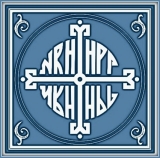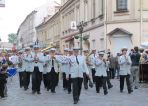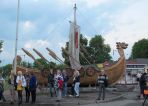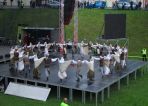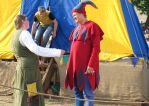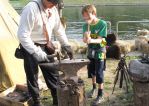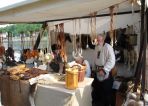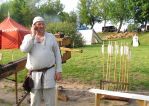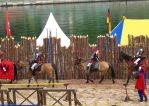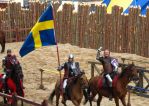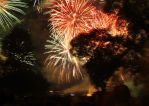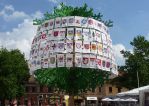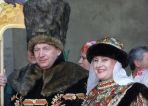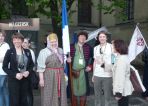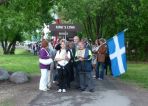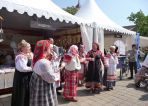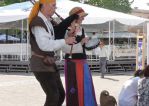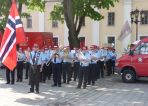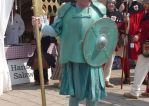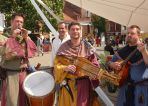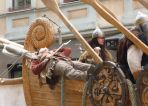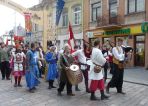About Hansa
The Hansa (from the Old German 'Hansa' - group, union) - was a union of free German city-states in the 13-17th centuries. These cities were conveniently located so that they could control the flows of goods between the Baltic and the North Seas. In partner-cities of the union abroad Hansa houses were created. At various points in history uniting up to 170 cities and towns of the Western and Northern Europe, the Baltic States and Russia, the Hansa played a considerable part in the development of trade, diplomacy and intercultural dialog in the Pan-European space.
The interrelations of the Hansa and Russian cities comprised an entire epoch in the history of the latter. Velikiy Novgorod was a closer partner of the Hansa when compared to other towns, as it hosted some of the largest Hanseatic branches - the Gothic and the German foreign merchant courtyards. In Russia, the main export commodities were furs, and Novgorod controlled the respective game lands. From Pskov to Europe, mainly wax was exported, which played a pivotal role in indoors lighting, since it was the main material for candle production. Other towns of the Russian northwest also traded with the Hansa regularly, although in smaller scales. The Hansa formally existed until 1669, and yet no longer was it that powerful confederation of the past. Inside the Hansa, disagreements between the cities gradually brooded and grew, and quite many of them were simply conducting individual policies instead, which led to separation. The Hanseatic League ceased its activities due to the transfer of the world trade into the Atlantic Ocean, and the development of new forms of economic interactions.
In 1980, in the Netherlands the 700th Anniversary of the Hansa foundation was marked; that same year in the Dutch town of Zwolle, in order to support trade and tourism, an organization titled 'the Hanseatic League of the New Times' (unofficially referred to as the New Hansa) was established. Since then, annually several days are allocated for the Hansa Days festival, during which festivities are held in one of the New Hansa cities. The exhibitions, fairs and other township trade-related events of the Hansa Days are aiming at the restoration of the spirit of the medieval Hansa. The host-city of the festival and the guest-cities strive to promote themselves as cities rich in history, whose considerable part was connected with the medieval Hansa. Besides, in the course of the festival international fora are held, where New Hansa representatives discuss pressing issues of political, economic and cultural cooperation.
In 2009, for the first time in Russia, the festival was held in Velikiy Novgorod. The next international Hansa Days in Russia will be organized in Pskov in 2033.
At present, the New Hansa unites 176 towns and cities of 16 European states. The official website of the New Hansa can be found at http://hanse.org.

